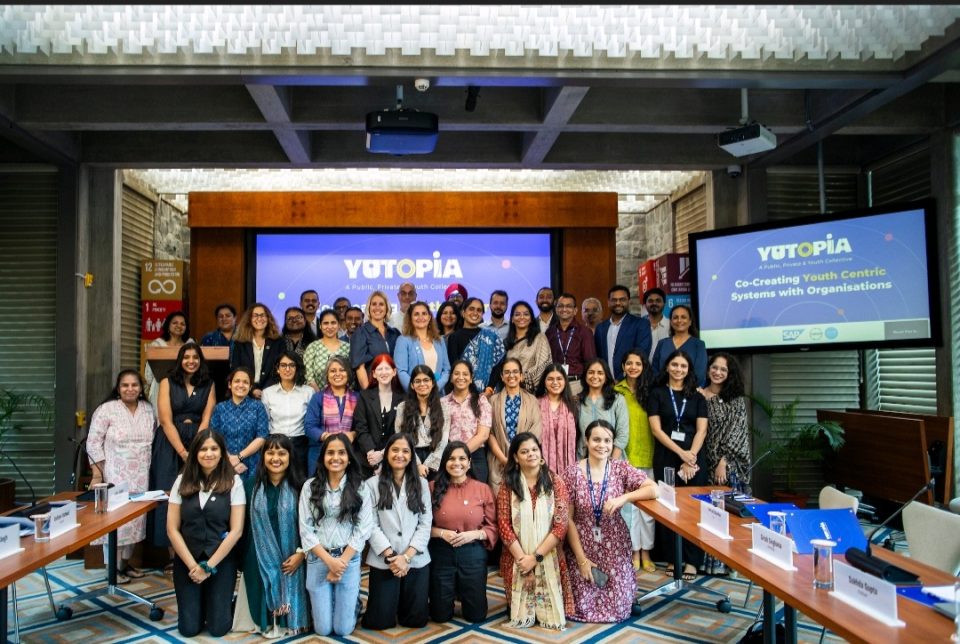The customer experience landscape is evolving at breakneck speed. Moreover, digital natives now constitute 40% of the global consumer base, fundamentally reshaping business expectations. Furthermore, organizations that prioritize excellent customer experience can boost sales revenues by 2-7% and profitability by 1-2%. However, the most transformative shift happening today isn’t just about technology or processes—it’s about placing youth at the center of organizational decision-making.
Yutopia: Youth Revolution in Customer Experience
Digital natives bring unprecedented expectations to the table. Additionally, they demand instant responses, with 57% expecting customer service replies within 24 hours and 27% within just hours. Nevertheless, their influence extends far beyond speed requirements. Subsequently, they’re pushing organizations to reimagine fundamental approaches to customer engagement.
Generation Z customers demonstrate remarkable loyalty potential, with 88% considering themselves loyal to five or fewer brands. However, they’re also the least forgiving generation. Specifically, 54% will abandon a company after a single poor service experience, compared to only 38% of Baby Boomers. Consequently, organizations must elevate their customer experience standards dramatically.
Yutopia: A Blueprint for Youth-Inclusive Innovation
The recent launch of Yutopia by SAP and UNICEF YuWaah represents a groundbreaking approach to organizational transformation. Rather than treating young people as mere beneficiaries or employees, Yutopia positions them as active co-creators of business solutions. Additionally, this initiative targets India’s 350 million young people as equal stakeholders in national development.
The platform focuses on three core strategies. First, it convenes cross-sector partnerships between ministries, private companies, and civil society organizations. Second, it builds organizational capacity for meaningful youth engagement. Third, it employs human-centered design thinking to develop frameworks that advance youth centrality.
The Business Case for Youth-Centric Customer Experience
Organizations embracing youth-inclusive practices unlock significant competitive advantages. Primarily, they tap into the innovative mindset of digital natives who naturally understand emerging customer behaviors. Furthermore, young professionals bring fresh energy, creativity, and new perspectives when given decision-making authority.
Research shows that 86% of millennials will accept lower pay to work for companies sharing their values. Similarly, 65% of Gen Z customers will abandon retailers lacking personalized experiences. Therefore, organizations must align their internal youth engagement with external customer expectations.
The transformation extends beyond customer service to core business innovation. Specifically, youth-led initiatives drive structural organizational changes through their unique understanding of digital-first experiences. Consequently, companies benefit from innovative approaches that resonate with their target demographics.
Strategic Implementation: From Consultation to Co-Creation
Traditional customer experience models relied on top-down decision-making processes. However, youth-centric approaches demand authentic participation across all organizational levels. Moreover, successful implementation requires moving beyond tokenistic involvement toward genuine shared leadership.
Organizations must establish clear frameworks for youth participation in decision-making processes. Additionally, they need structured pathways for young employees to influence policies, programs, and platforms. Subsequently, this creates environments where youth voices inform strategic customer experience initiatives.
The transition requires comprehensive organizational readiness assessments. Furthermore, companies must examine how existing systems either enable or impede authentic youth engagement. Nevertheless, the investment yields substantial returns through enhanced customer satisfaction and innovation capacity.
Technology as an Enabler, Not a Driver
While technology facilitates youth engagement, the human element remains paramount. Specifically, 85% of Gen Z customers have used virtual agents, yet they still value personalized, empathetic interactions. Therefore, organizations must balance automated efficiency with authentic human connections.
Artificial intelligence tools can enhance personalization and response times. However, they must be implemented with youth input to ensure they address real customer needs. Additionally, AI systems should amplify rather than replace the creative problem-solving capabilities that young people bring to customer experience challenges.
Digital platforms enable seamless omnichannel experiences that Gen Z expects. Nevertheless, the most successful implementations involve young people in designing and optimizing these customer touchpoints. Subsequently, organizations achieve higher customer satisfaction rates and stronger brand loyalty.
Measuring Success: Beyond Traditional Metrics
Youth-centric customer experience initiatives require new measurement approaches. Traditional metrics like Net Promoter Score remain important, but they must be supplemented with indicators of authentic youth participation. Additionally, organizations should track the correlation between youth engagement levels and customer satisfaction improvements.
Success indicators include the percentage of young people involved in decision-making processes. Furthermore, organizations should monitor how youth-led initiatives translate into improved customer experiences. Subsequently, they can demonstrate the business value of inclusive organizational practices.
Long-term success depends on sustained commitment to youth leadership development. Therefore, organizations must invest in continuous capacity building and mentorship programs. Additionally, they should create career pathways that enable young people to advance into senior customer experience roles.
The Ripple Effect: Transforming Industries
Organizations implementing youth-centric customer experience models create industry-wide transformation. Their innovative approaches often become best practices that competitors adopt. Furthermore, they influence supplier networks and partner organizations to embrace similar inclusive practices.
The impact extends to policy and regulatory environments. Specifically, government organizations like India’s Ministry of Youth Affairs and Sports are aligning their initiatives with youth-centric approaches. Consequently, this creates supportive ecosystems for organizational transformation across sectors.
Educational institutions are also adapting their curricula to prepare students for these new organizational models. Additionally, they’re partnering with companies to provide real-world experience in youth-inclusive customer experience design. Subsequently, this creates a pipeline of qualified professionals ready to drive continued innovation.

Future Implications: The Next Decade of Customer Experience
The Yutopia model represents just the beginning of youth-centric organizational transformation. As digital natives move into senior leadership positions, they will implement even more radical changes to traditional business models. Furthermore, their expectations will continue reshaping customer experience standards across industries.
Organizations that embrace youth-inclusive practices today will have significant competitive advantages tomorrow. Specifically, they will better understand evolving customer needs and respond more quickly to market changes. Additionally, they will attract and retain top talent who value meaningful participation in organizational decision-making.
The integration of youth voices into customer experience strategy isn’t just about meeting current expectations—it’s about anticipating future needs. Therefore, forward-thinking organizations are investing now in the systems and cultures that will define the next generation of customer engagement.
Conclusion: The Imperative for Action
The convergence of youth empowerment and customer experience excellence represents one of the most significant business opportunities of our time. Organizations that recognize young people as strategic partners rather than junior participants will lead their industries in innovation and customer satisfaction.
The Yutopia initiative demonstrates that meaningful youth engagement is both achievable and profitable. Moreover, it provides a replicable framework that organizations across sectors can adapt to their specific contexts. However, success requires genuine commitment to sharing decision-making authority and creating authentic partnerships with young people.
The question isn’t whether organizations should embrace youth-centric customer experience models—it’s how quickly they can implement these transformative approaches. As customer expectations continue evolving at unprecedented speeds, the organizations that thrive will be those that place youth voices at the center of their strategic decision-making processes.
The future belongs to organizations that understand this fundamental truth: when young people have the space to make decisions, learn from experiences, and contribute meaningfully, they bring the fresh perspectives and innovative solutions that today’s customers demand. Therefore, the journey toward youth-centric customer experience isn’t just a business strategy—it’s an essential pathway to organizational sustainability and success.

